Volume 69, Issue 3
Displaying 1-13 of 13 articles from this issue
- |<
- <
- 1
- >
- >|
Paper (In Japanese)
-
2013Volume 69Issue 3 Pages 429-438
Published: 2013
Released on J-STAGE: September 20, 2013
Download PDF (4215K) -
2013Volume 69Issue 3 Pages 439-451
Published: 2013
Released on J-STAGE: September 20, 2013
Download PDF (3849K) -
2013Volume 69Issue 3 Pages 452-466
Published: 2013
Released on J-STAGE: September 20, 2013
Download PDF (5193K) -
2013Volume 69Issue 3 Pages 467-480
Published: 2013
Released on J-STAGE: October 18, 2013
Download PDF (2287K) -
2013Volume 69Issue 3 Pages 481-490
Published: 2013
Released on J-STAGE: October 18, 2013
Download PDF (736K) -
2013Volume 69Issue 3 Pages 491-504
Published: 2013
Released on J-STAGE: November 20, 2013
Download PDF (1130K) -
2013Volume 69Issue 3 Pages 505-515
Published: 2013
Released on J-STAGE: November 20, 2013
Download PDF (873K) -
2013Volume 69Issue 3 Pages 516-526
Published: 2013
Released on J-STAGE: November 20, 2013
Download PDF (1212K) -
2013Volume 69Issue 3 Pages 527-542
Published: 2013
Released on J-STAGE: November 20, 2013
Download PDF (2431K) -
2013Volume 69Issue 3 Pages 543-556
Published: 2013
Released on J-STAGE: November 20, 2013
Download PDF (2767K) -
2013Volume 69Issue 3 Pages 557-571
Published: 2013
Released on J-STAGE: November 20, 2013
Download PDF (5117K) -
2013Volume 69Issue 3 Pages 572-585
Published: 2013
Released on J-STAGE: December 20, 2013
Download PDF (1056K)
Technical Report (In Japanese)
-
2013Volume 69Issue 3 Pages 416-428
Published: 2013
Released on J-STAGE: September 20, 2013
Download PDF (2936K)
- |<
- <
- 1
- >
- >|
